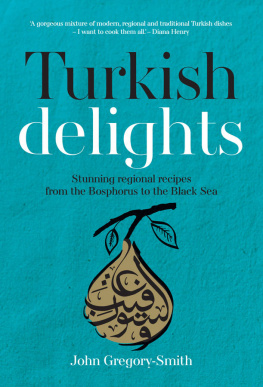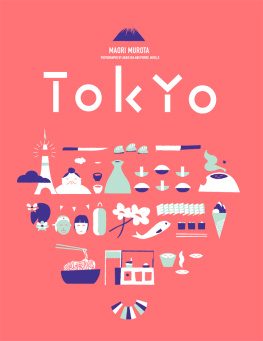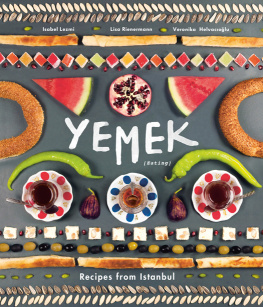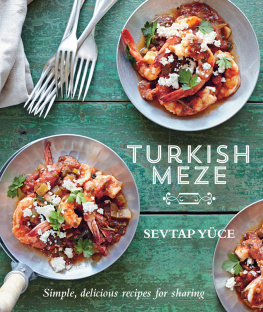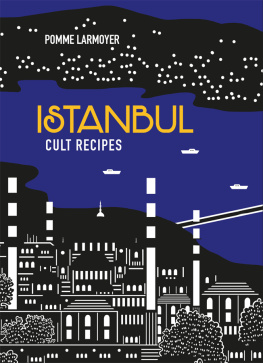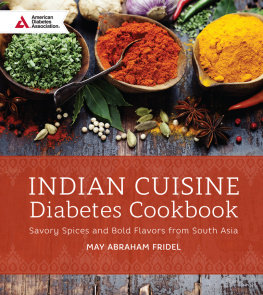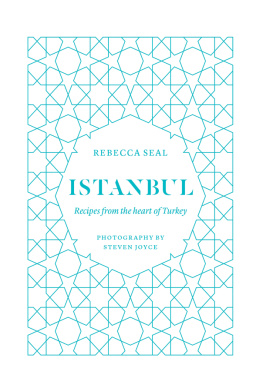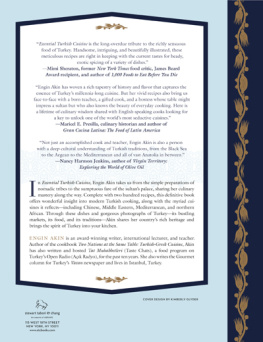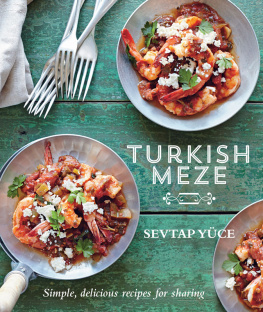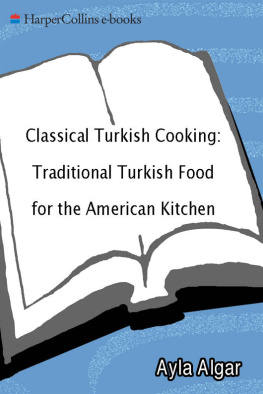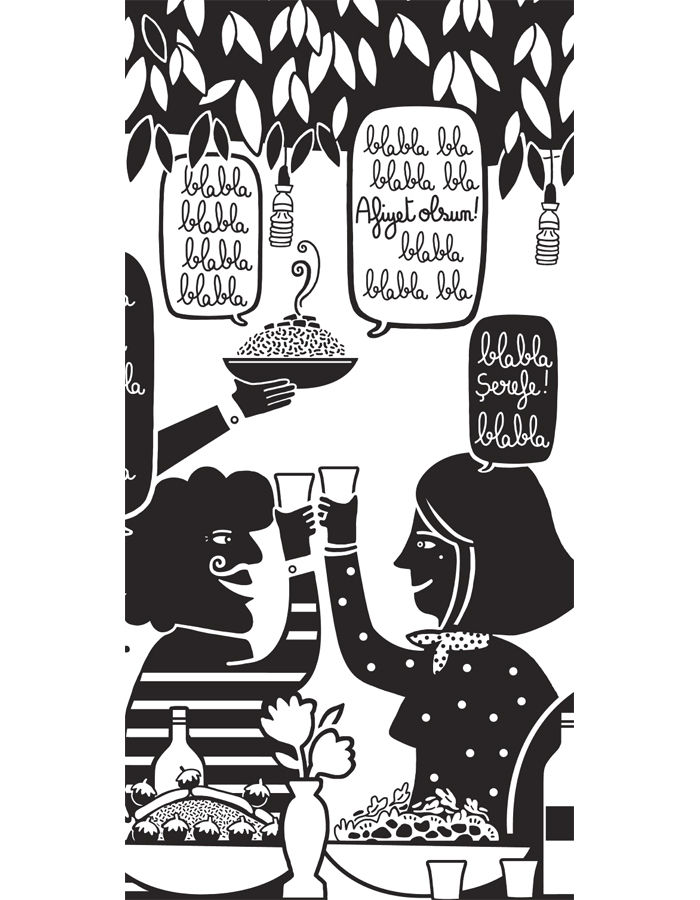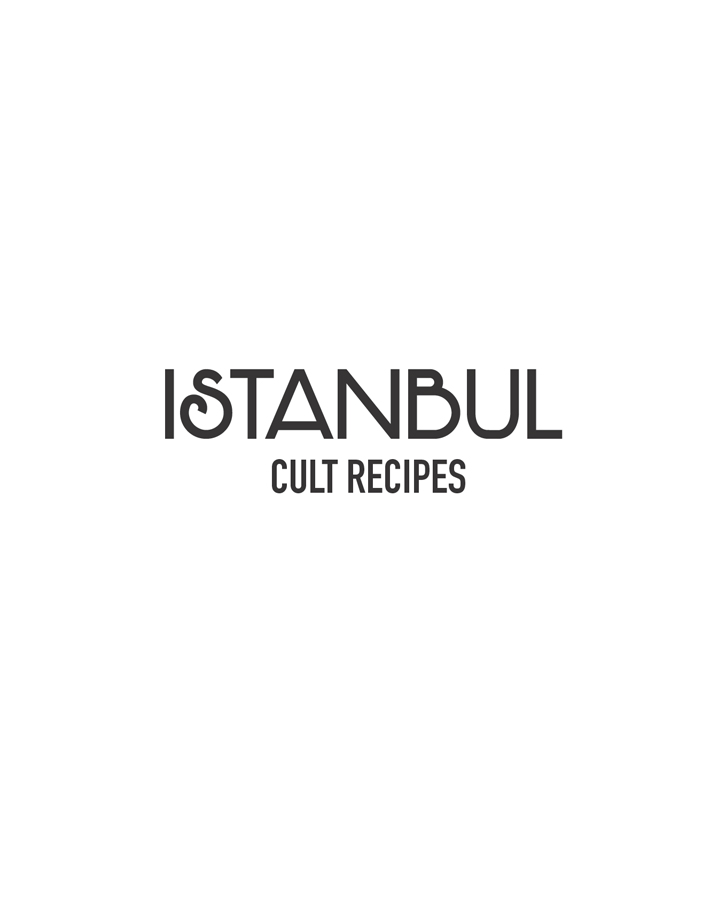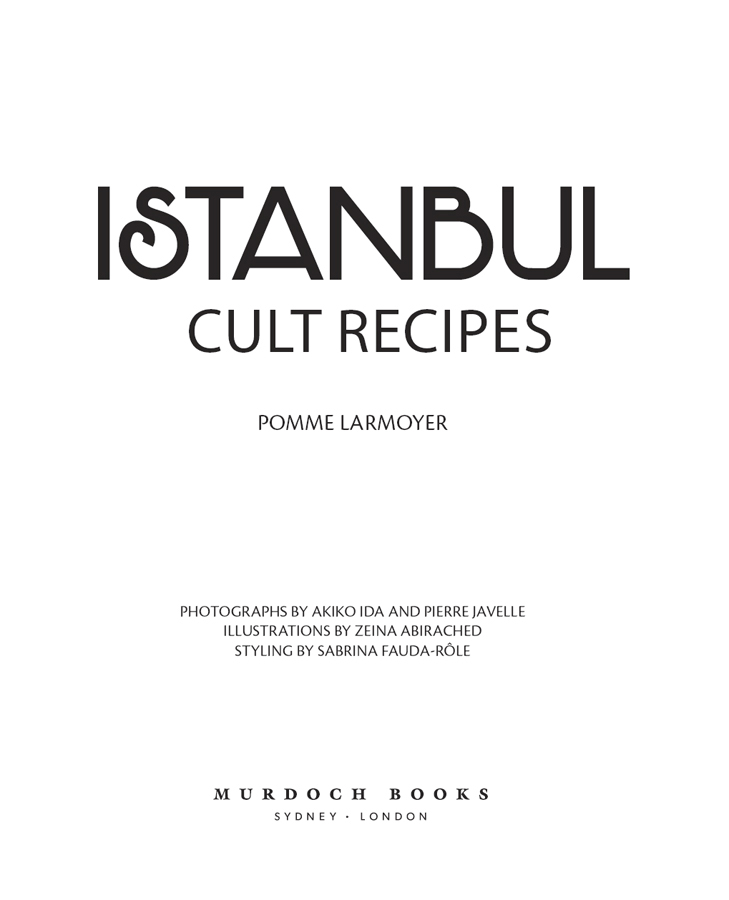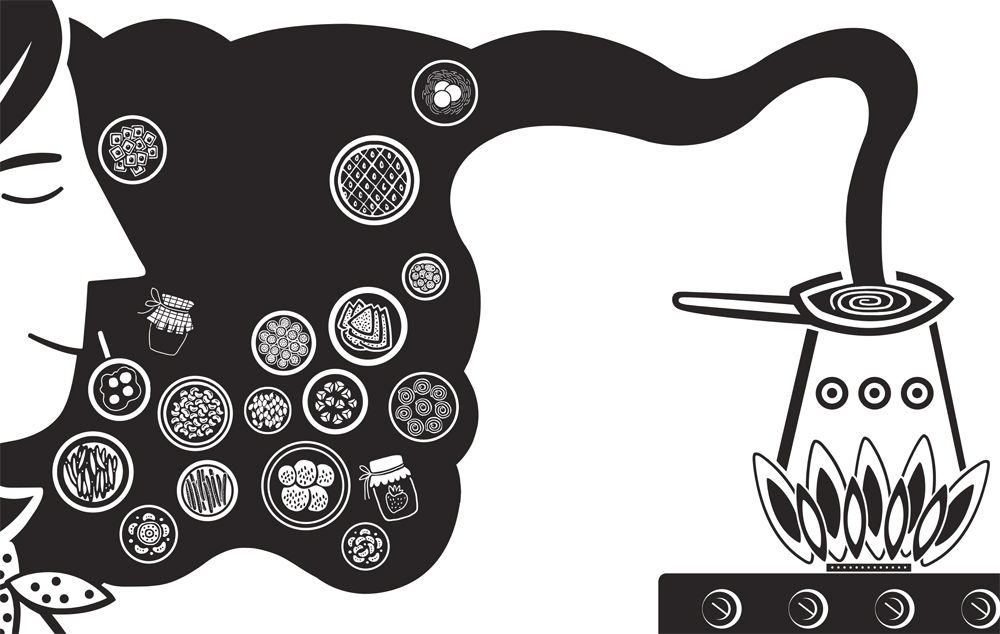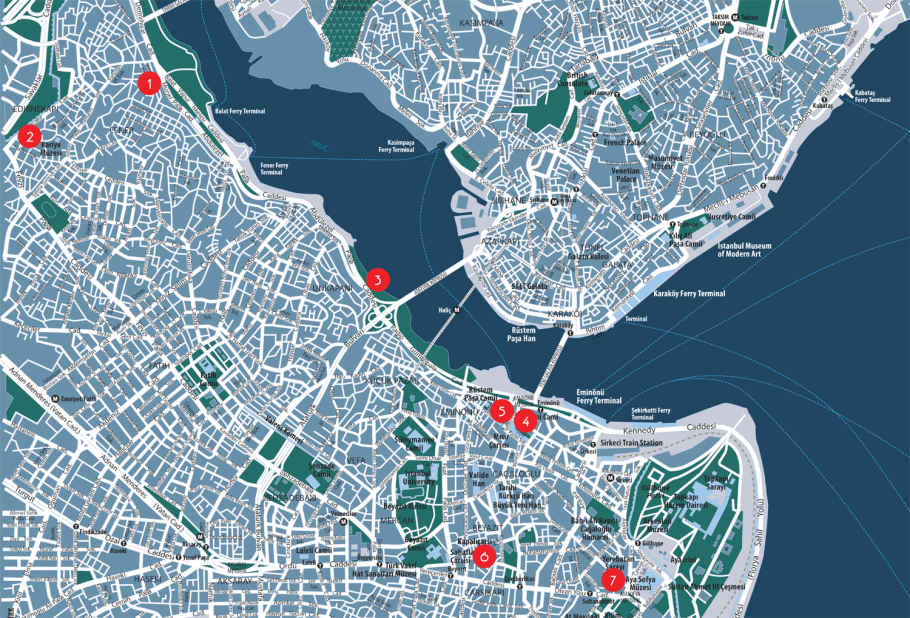Istanbuls long-standing love affair with food is reflected in the delicacies on offer at all hours of the day and night. The streets of the city pulse with restaurants, cafs and street vendors each selling their version of dishes beloved throughout Turkey: addictive street food; elegant and contemporary restaurant cuisine; and the fresh, healthy dishes cooked in homes across the country.
The recipes mirror this diversity. Take your pick of lively Turkish breakfasts; linger over delectable little plates of meze; try your hand at making breads and kebabs sold from the citys food carts, and master the art of making sweets such as baklava, helva and, of course, the unctuous Turkish delight.
With maps highlighting some of the authors favourite food destinations, and profiles on some of the citys proprietors and chefs, let Istanbul Cult Recipes envelop you in its passion for Turkish food.
preface
Istanbul welcomed me into its vast embrace early one morning. Arriving from the East by train into Haydarpaa Station, I had my feet in Asia and the Bosphorus and Europe in front of me. The City of Cities was all around me. For those who love travel, Istanbul is Byzantium; ancient and yet ultra-modern, imposing and incredibly endearing. Are you lost? We will come with you. Are you curious? Come and explore. The food is like the city: endless, generous, varied and festive. There is as much to see in the former Constantinople as there is to discover in its food and thats a lot. The citys dishes are so diverse, surprising and refined that if you are new to Istanbul, you might wonder how you could have overlooked it for so long. Eating there is like putting together a beautiful mosaic because Ottoman cuisine is a vast gastronomic culture that spans epochs and influences from Europe, the Middle East, Central Asia and the Mediterranean it evokes journeys, histories and peoples. There is the food of the street: rich and frankly addictive; the food served in homes and cafs: simple, healthy and fresh. The contemporary cuisine is elegant and attractive the good that comes when the new appropriates the old. And this sums up Istanbul: a crossroads, a diversity of styles, cultures and rituals. It is Europe and Asia, the sea and the land, a megalopolis and individual neighbourhoods, tradition and the new, Turkish, Greek, Jewish, Armenian and Kurdish neighbourhoods, secular here, religious there. Little lanes in the bazaar and, just opposite, the wide and busy stikll Caddesi. Istanbul is a simit food cart and a rak (anise-flavoured spirit) apritif on a terrace overlooking the Bosphorus, and in the middle and all around is the strait, the Golden Horn, the sea.
Istanbul shares with its residents and visitors alike a great love affair with food. You will always find something to eat in the city, whatever the time of day or night. There are morning dishes, midday dishes, four oclock dishes (tea with a brek), evening meals, dishes for before the game (a little drm?), after the game (here you go, an islak burger), for later at night (go on, a plate of mant), for on the way home (a tripe soup or sandwich at five in the morning!).
One thing to remember when exploring the citys food culture is that almost every dish has its own neighbourhood, and a best address at which to enjoy it. This makes for a long list of places to stop for lunch, dinner, afternoon tea, a snack on the run or just a little treat to help get back ones strength. There are the kahvalt salonu , dedicated to breakfast; the lokanta , cafeteria-style restaurants that serve ready-made dishes; and the meyhane, taverns that serve meze, fish and rak. The ocakba is the restaurant for grilled meats; the orbac is the soup bar; the kahvehane is where you drink coffee; the pidecisi sells pide (pizza); the kfteci kfte (meatballs); the kebabci kebabs; the mantc mant (dumplings); and the ikembeci offal and tripe dishes. Not to mention the yufkac (where you can buy thin yufka pastry), the muhallebici (the place to go for desserts), the balk restoran (oyster bar), the frn (bakery)
Are you hungry? Welcome to Istanbul.
TABLE OF CONTENTS
Breakfast
meze and fish
soups, meats and rice
Family recipes
sweet things
ingredients and recipe index
AT THE KAHVALTI SALONU
BREAKFAST
The traditional breakfast is the kahvalt literally kahve alt , or under (before) the coffee, which is to say the food you eat before drinking a coffee. It is actually the most complete meal of the day the equivalent of a brunch. In Istanbul it is quite acceptable to eat kahvalt late, even in the afternoon. The main thing is allowing the time to savour it. Sunday is often an occasion for lingering around a well-laden table, and the kahvalt salonu (restaurants specialising in breakfast) are full to bursting all day long.
On the kahvalt table are sliced tomatoes and cucumbers, olives, cheeses (beyaz peynir, a white cheese similar to feta; dil peyniri, mild and stringy; kaar, a firmer cheese, made from sheeps or goats milk ), bread, jam, kaymak (a sort of clotted cream made from buffalos milk), honey as well as more substantial dishes.
fatih Old Istanbul
| 1 | In the west part of Fatih (the municipality of old Istanbul) are Balat and Fener , the old Jewish and Greek quarters, which are among the most beautiful in the city. Lose yourself in the alleyways that go up and down, among the red roofs of the little houses that are sometimes coloured and often rundown. Unpretentious, poor in parts, trendier in others, these rapidly evolving neighbourhoods always come across as a world apart within Istanbul. Agora Meyhanesi 1890 (Mrselpaa Caddesi 185, Ayvansaray, Fatih) , a huge old tavern that was reopened in 2014, successfully carries on the spirit of the original establishment (which dates from 1890), with its vintage objects, its in-house products and above all its cooking, faithful to the Greeks who originally founded the Agora. |
| 2 | Not too far away (if you dont get lost, but you will get lost and thats the whole point), Asitane restaurant (Kariye Camii Sokak No: 6, Edirnekap) reconnects with the Ottoman gastronomic tradition, the cuisine of the empires palaces, with their thousands of slightly forgotten recipes, some of which are revived here. The establishment is next to the old Byzantine Church of the Holy Saviour in Chora , with its beautiful proportions and sublime mosaics (now a museum). |


